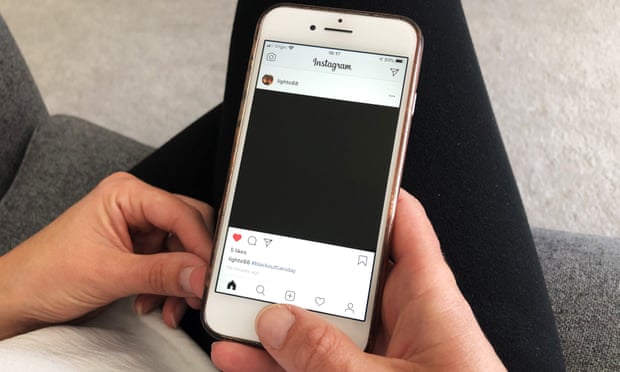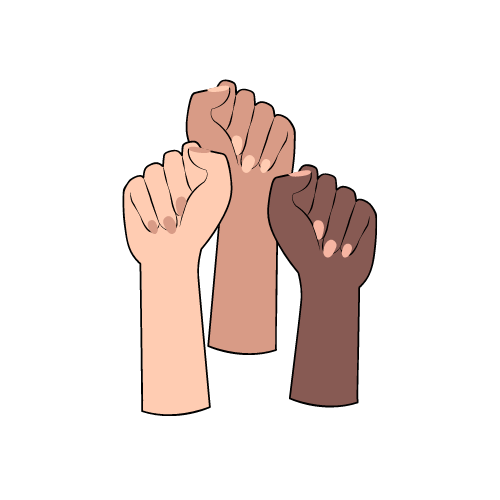In our latest post, Ellinor already touched upon the topic of digital activism and its effectiveness. Today, I will further dive into this topic and discuss the effects of online activism on activism – also within the context of the Black Lives Matter movement.
As Poell and van Dijck (2018) argued, it is important to look at how digital activism, online movements, and protests affect the desired goal of the movement. Social media has made activism more accessible than ever and when a movement goes viral, it can gain an incredible amount of attention within a short amount of time. However, this attention may not contribute to the desired goal.
A recent and often criticized campaign that went viral is the Blackout Tuesday related to the Black Lives Matter (BLM) movement. The death of George Floyd in May 2020 triggered worldwide protests against police racism and police brutality, and lead to social unrest. When the BLM movement came to its peak in June 2020, protesting was taking place both online and offline all across the globe. On June 2nd, a social media ‘blackout’ took place. The blackout was an attempt by two black women in the music industry to pause all work for a day in the light of the demonstrations. However, the initiative quickly started leading its own life and was adopted by artists, and later also by others, who posted the black square as a sign of solidarity with the movement (Coscarelli, 2020). On that day, almost 28 million people posted a black square on their Instagram page (Bakare & Davies, 2020). Many of those posting the black square used the hashtag #BlackLivesMatter. This hashtag was used by the organizers of the BLM protests to share useful information about the offline protests, but Blackout Tuesday swamped the hashtag and all important information got lost. The way #BlackoutTuesday spread online surely created a lot of attention for the movement, but whether this attention was effective and productive is a different question. Protests that go viral and gain a lot of online attention can lead to slacktivism instead of activism. Slacktivism or performative activism is a form of activism in which a movement is being supported online with very little effort and commitment involved. This often also leads to very little impact and the ‘activism’ is used to look good, rather than to do good.

In the case of Blackout Tuesday, many people ‘joined’ the movement by posting a black square, but failed to inform themselves further and engage in offline action (Coscarelli, 2020), and the use of #BlackLivesMatter hashtag silenced the organizations that were working on the ground. What many people online did not realize, was that posting a black square was not enough to reach the goals of the movement and much more engagement was needed in order to do so.
However, there is a silver lining to these failed attempts of online engagement with a movement, as online efforts often lead to other (offline) actions. As Tufekci (2017) argued: “Most people who become activists start by being exposed to dissident ideas, and people’s social networks which include online and offline interactions—are among the most effective places from which people are recruited into activism” (p. 16-17). Another study found that even people who are on the periphery of a movement, may still contribute to the movement by informing others with their online actions, and thus create more awareness (Barbera et al., 2015). It may be a false dichotomy to think that those who engage in online activism do not engage in offline activism. This simplification of the understanding of how people relate to the internet and how people’s relations with the internet affect social movements is termed digital dualism – the premise that the online world is less significant or real than the offline world (Tufekci, 2017).
This leaves me wondering whether slacktivism can lead to activism. Is online attention eventually effective in the offline world? On the one hand, social media is needed in order to reach a larger audience, but on the other hand, protests going viral can be counterproductive – as was the case with Blackout Tuesday when Instagram users swamped the #BlackLivesMatter hashtag. Can social media contribute to the desired goal (Poell & van Dijck, 2018)? I think that in the end activism needs the visibility that is created by social media in order to reach its desired goal, even when those creating the online visibility do not fully engage with the movement. What do you think? Is slacktivism only ineffective or can it support the movements?
References
Bakare, L., & Davies, C. (2020, June 02). Blackout Tuesday: Black squares dominate social media and spark debate. Retrieved from https://www.theguardian.com/us-news/2020/jun/02/blackout-tuesday-dominates-social-media-millions-show-solidarity-george-floyd
Barberá, P., Wang, N., Bonneau, R., Jost, J., Nagler, J., Tucker, J. & González-Bailón, S. (2015).
Coscarelli, J. (2020, June 02). #BlackoutTuesday: A Music Industry Protest Becomes a Social Media Moment. Retrieved from https://www.nytimes.com/2020/06/02/arts/music/what-blackout-tuesday.html
Poell, T. & van Dijck, J. (2018). Social Media and New Protest Movements. In J. Burgess, A. Marwick & T. Poell (Eds.), SAGE Handbook of Social Media (pp. 546-561). London: Sage.
Tufekci, Z. (2017). Twitter and Tear Gas-The Power and Fragility of Networked Protest. Yale University Press.

